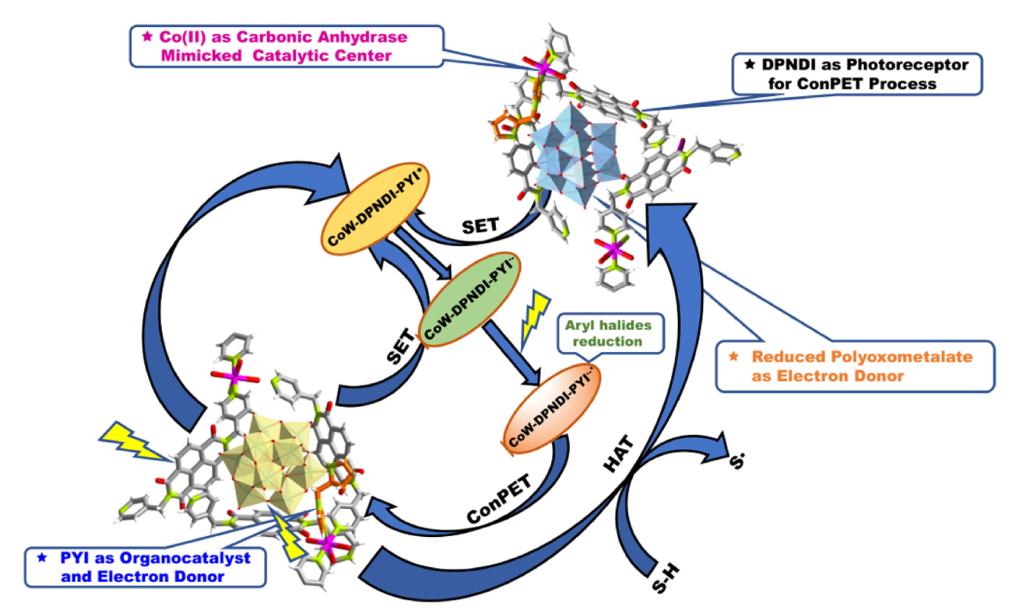ACS Appl. Mater. Interfaces 2020, 12, 2199-2206, DOI: 10.1021/acsami.9b13538
Authors:Jiachen He,† Jie Li,† Qiuxia Han,* Chen Si, Guiqin Niu, Mingxue Li, Jingping Wang, and Jingyang Niu
Key Laboratory of Polyoxometalate Chemistry of Henan Province, School of Chemistry and Chemical Engineering, Henan University, Kaifeng 475004, P. R. China
E-mail:hdhqx@henu.edu.cn
Organic halides are a class of persistent organic pollutants that adversely affect human health. Several iridium and ruthenium complexes [using a typical photoinduced electron-transfer (PET) process] or transition metal complexes of Pd, Rh, or Ni have been applied in dehalogenation reactions. However, because of their high carbon-halide bond dissociation energy (BDE), negative reduction potential, and complex cleavage mechanism, arylbromides and chlorides are extremely difficult to degrade. Moreover, they are easily accumulated and passed from one organism to another through the food chain. Consecutive photoinduced electron-transfer (ConPET) processes have recently emerged as an exciting alternative to achieve the activation of strong bonds with higher redox potentials.
Recently, Han’s group developed a heterogeneous approach for radical chain reduction of various arylbromides and chlorides without adding any cocatalyst is introduced by incorporating polyoxometalates (POMs) and amine catalysts into a naphthalenediimide (NDI)-based polymer. CoW-DPNDI-PYI exhibits high activity in the photocatalytic reduction of aryl halides by the synergistic effects of ConPET and hydrogen-atom-transfer (HAT) processes and an enzyme-mimicking CO2 cycloaddition reaction. The ConPET process with N,N′-bis(4-pyridylmethyl)-naphthalenediimide (DPNDI) facilitates effective solar energy conversion. POMs and amine catalysts, as efficient HAT catalysts and electron donors, improve the generation of the ConPET process. The success of this work demonstrates the great application of the synergistic effects of ConPET and HAT processes in heterogeneous photocatalysis C-H arylation. Besides, with the Lewis base DPNDI and PYI sites, the Lewis acid cobalt(II) sites, and the Brønsted acid POM sites, CoW-DPNDI-PYI also displayed high activity in cycloaddition of CO2 with epoxides without any cocatalyst under mild conditions (0.1 MPa CO2, ≤70 °C)

Figure 1. Design Concept for Achieving the Photocatalytic Reduction of Aryl Halides by the Synergistic Effects of ConPET and HAT Processes
Jiachen He, an undergraduate student of 2014, and Jie Li, a doctoral student of 2017, are the first authors with equal contribution. Associate Professor Qiuxia Han is the corresponding author, and Henan University is the exclusive holder.
This work was supported by the National Key R&D Program of China, the National Natural Science Foundation of China, the Key scientific research project of henan higher education institutions, and Henan University First-class Discipline Cultivation Project.
LINK:https://pubs.acs.org/doi/10.1021/acsami.9b13538.
ACS Appl. Mater. Interfaces: SCI, top, IF= 8.69


